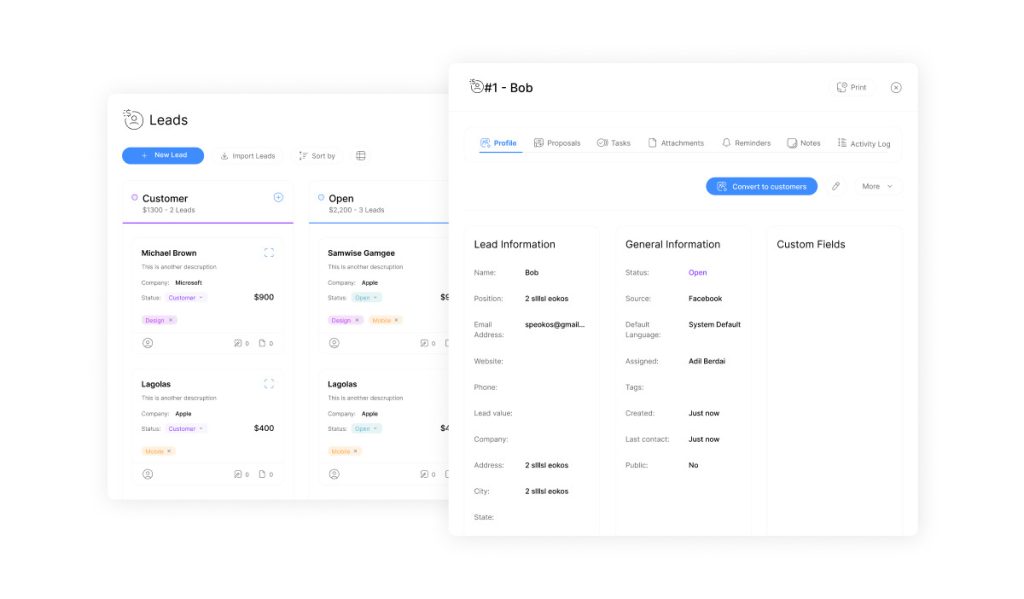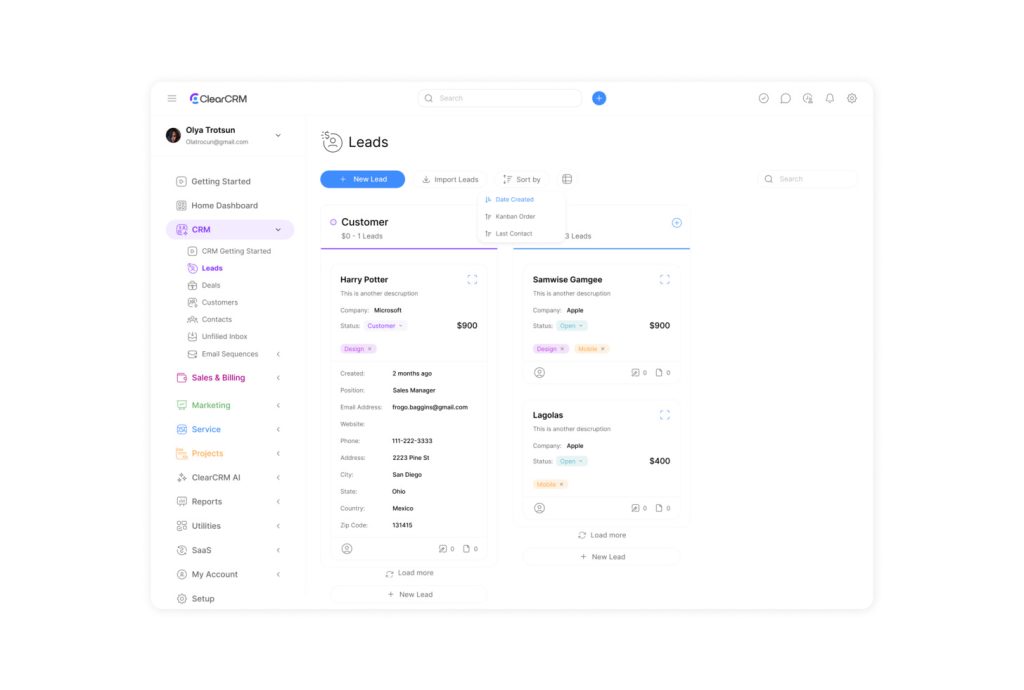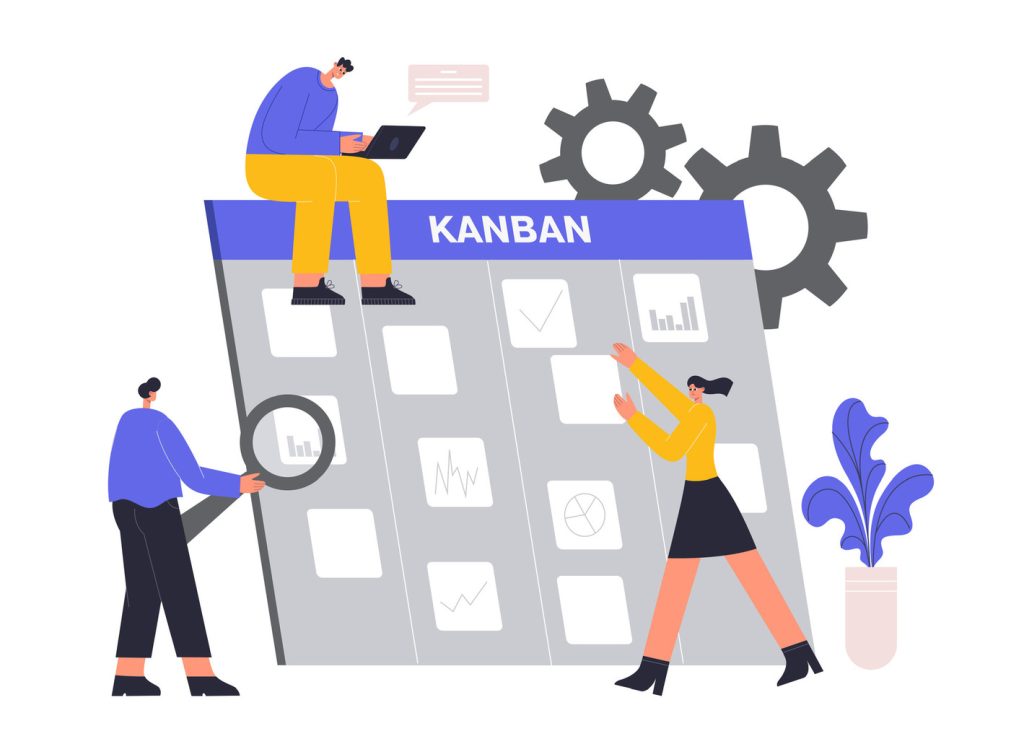How to Effectively Use Lead Kanban View for Project Management

Effective project management is crucial for businesses to streamline operations and enhance customer relationships. One tool that has gained popularity in recent years is the Kanban View, a visual representation of the workflow that enables teams to track progress and identify bottlenecks.
Originating from lean manufacturing, the Kanban system has evolved into a powerful tool for modern business operations. By converting project scope, progress, and flow into visual information, managers can gain a high-level view of project developments and make informed decisions.
The Lead Kanban View transforms project management by offering a clear snapshot of your project’s flow, enabling teams to collaborate more effectively and increase overall productivity.
Key Takeaways
- Understand the fundamentals of Lead Kanban View and its benefits for project management.
- Learn how to set up and customize your Kanban system to align with your business needs.
- Discover how to leverage the visual management tool to enhance team collaboration and productivity.
- Explore advanced features of Lead Kanban View to maximize its potential.
- Gain practical guidance on implementing Lead Kanban View for effective project management.
Understanding Lead Kanban View Fundamentals

To effectively manage projects, understanding the fundamentals of Lead Kanban View is crucial. A well-implemented Kanban view can significantly enhance team productivity and project visibility.
What is a Kanban View?
A Kanban view is a visual representation of work items as they move through various stages of a workflow. It is characterized by visual cards, columns representing different stages, and work-in-progress limits. “Kanban allows teams to visualize their work, making it easier to track progress and identify bottlenecks,” as emphasized by Kanban experts. The core components include:
- Visual Kanban cards that represent individual work items or tasks.
- Columns that signify different stages of the workflow, such as ‘To Do,’ ‘In Progress,’ and ‘Complete.’
- Work-in-progress (WIP) limits that restrict the number of cards in a column, promoting focus and efficiency.
The Origin and Evolution of Kanban Methodology
The Kanban methodology originated in the 1940s as part of Toyota’s “Just-in-Time” production system. Over time, it has evolved into a versatile framework for managing knowledge work and has been adopted across various industries. As David J. Anderson, a pioneer in Kanban, notes, “Kanban is about visualizing work, limiting WIP, and focusing on flow.” Today, Kanban views are implemented using digital tools that integrate with business systems, offering enhanced flexibility and scalability.
Benefits of Using Lead Kanban View for Project Management
Implementing Lead Kanban View can revolutionize project management by providing a clear visual representation of the workflow. This visualization is crucial for understanding the project’s status and identifying areas that require improvement.
Visual Workflow Management
Lead Kanban View simplifies complex project data into an intuitive layout that teams can easily interpret, enabling quick assessment of project status and identification of bottlenecks. The transparency it provides fosters a shared understanding of priorities and workload distribution, reducing miscommunication and improving decision-making.
Improved Team Collaboration
Team collaboration improves significantly as all members can see the status of work items, who’s responsible for what, and which tasks need immediate attention. The visual nature of Kanban facilitates more effective meetings, as discussions can focus on specific cards and their progress through the workflow.
Enhanced Productivity and Efficiency
Productivity and efficiency gains come from reduced time spent on status updates, clearer prioritization, and the ability to identify and address process bottlenecks quickly. By leveraging Lead Kanban View, teams can maintain momentum and ensure that leads don’t stagnate at any particular stage of the process.
- Visual workflow management enhances project visibility.
- Improved collaboration reduces miscommunication.
- Enhanced productivity leads to faster project completion.
Setting Up Your Lead Kanban View

To maximize the benefits of your Lead Kanban View, it’s essential to set it up correctly from the start. This involves several key steps that help tailor the view to your specific business needs.
Choosing the Right Platform for Your Needs
Selecting the right platform for your Lead Kanban View requires evaluating your specific business needs, integration requirements, and team size. Popular platforms include dedicated project management tools like Trello or Asana, and CRM systems with Kanban functionality like Salesforce.
Configuring Columns and Stages
Configuring columns and stages is a critical step that should reflect your actual sales or project workflow. Each column represents a distinct phase in your process, from initial lead stages to final won or lost opportunities.
Customizing Card Information and Fields
Customizing card information and fields allows you to display the most relevant information at a glance, such as lead value, priority, deadline, or assigned team member. This step is crucial for maintaining a clear and efficient workflow.
By carefully configuring your Lead Kanban View, you can enhance team collaboration, improve productivity, and make data-driven decisions. Regularly reviewing and adjusting your Kanban settings ensures that your workflow remains optimized.
Organizing and Managing Leads with Kanban View
Effective lead management is crucial for any business looking to streamline its sales process. The Kanban view offers a visual and intuitive way to organize and manage leads, enhancing overall sales efficiency.
Creating and Categorizing Lead Cards
Creating and categorizing lead cards is a foundational step in utilizing the Kanban view effectively. By establishing clear criteria for the information displayed on each card, businesses can ensure that essential details are visible at a glance. This involves thoughtfully categorizing leads based on factors like lead source, value, or industry to facilitate easier filtering and prioritization.
Moving Leads Through Different Stages
Moving leads through different stages is typically accomplished through a simple drag-and-drop interface, which automatically updates the lead’s status in the system. The visual progression of cards across the Kanban board provides an intuitive representation of the sales pipeline, making it easy to identify which leads need attention.
Using Color Coding and Visual Indicators
Color coding and visual indicators serve as powerful tools for highlighting priority leads, approaching deadlines, or stalled opportunities that require intervention. Implementing a consistent system for visual indicators ensures that all team members can quickly interpret the status and priority of each lead without needing to open the card details.
Advanced Lead Kanban View Features

To maximize the potential of Lead Kanban View, it’s essential to explore its advanced features. These features are designed to enhance project management capabilities, streamline processes, and improve team collaboration.
Filtering and Searching Capabilities
Advanced filtering and searching capabilities allow teams to quickly locate specific leads based on criteria such as value, source, assigned representative, or activity date. This feature becomes increasingly valuable as your lead volume grows, enabling focused work on particular segments of your pipeline.
Summary Charts and Analytics
Summary charts and analytics provide visual representations of your pipeline health, including metrics like stage distribution, average time in stage, and conversion rates. These analytical tools help identify trends, bottlenecks, and opportunities for process improvement that might not be apparent from looking at individual cards.
Work in Progress (WIP) Limits
Work in Progress (WIP) limits are a core Kanban concept that restricts the number of items allowed in each column, preventing overloading and encouraging completion of existing work before taking on new tasks. Implementing WIP limits forces teams to address bottlenecks rather than continuing to pile up new leads in early stages, improving overall flow efficiency.
Integrating Lead Kanban View with Your Sales Process
To maximize the effectiveness of your sales process, integrating Lead Kanban View is crucial. This integration enables businesses to create a seamless and efficient workflow.
Aligning Kanban Stages with Sales Funnel
Aligning Kanban stages with your sales funnel creates a visual representation of your entire sales process, from lead generation to closed deals. This alignment ensures consistency between your methodology and visualization, requiring the mapping of each sales funnel stage to a corresponding Kanban column with clear criteria for progression.
Tracking Deal Progress and Velocity
With a well-integrated Kanban view, tracking deal progress and velocity becomes more intuitive. Sales managers can identify which deals are moving smoothly and which are stalled, spotting patterns in deal velocity such as bottlenecks or variations based on lead source or representative.
Planning Activities and Setting Reminders
Planning activities and setting reminders can be integrated directly into your Kanban system. Cards can display upcoming tasks, follow-up dates, or important deadlines, with many Kanban platforms allowing for the attachment of documents, notes, or communication logs, and integration with calendar systems for automated reminders.
Overcoming Common Challenges with Lead Kanban View

To maximize the potential of the Lead Kanban View, it’s crucial to understand and overcome the common challenges associated with it. While the Kanban View in Salesforce provides a top-level, visual overview of ongoing activities, it can present certain limitations.
Dealing with High Volume of Leads
Managing a high volume of leads can clutter the Kanban board, making it difficult to navigate. Strategies to address this include implementing strict filtering, archiving closed or inactive leads, and segmenting leads across multiple boards based on criteria like territory or product line.
Managing Team Adoption and Training
Team adoption and training are critical for the successful implementation of a Kanban system. Clear communication about the benefits of Kanban, comprehensive training, and ongoing support are essential for a smooth transition.
Addressing Technical Limitations
Technical limitations, such as restrictions on the number of cards that can be displayed and limited customization options, can impact the effectiveness of the Kanban View. Understanding these limitations is crucial for designing workarounds.
| Challenge | Strategy | Benefit |
|---|---|---|
| High Volume of Leads | Filtering, Archiving, Segmentation | Improved Navigation, Reduced Clutter |
| Team Adoption and Training | Clear Communication, Comprehensive Training, Ongoing Support | Smooth Transition, Increased Adoption |
| Technical Limitations | Understanding Limitations, Designing Workarounds | Optimized Performance, Enhanced Effectiveness |
Conclusion: Maximizing the Value of Your Lead Kanban View
Optimizing Lead Kanban View is essential for enhancing sales performance and driving business growth. To achieve this, businesses must continually refine their Kanban implementation based on team feedback and performance metrics.
Regular review and adjustments to column configurations, card information, and process modifications help identify opportunities for improvement. Encouraging team members to fully utilize all features of the Kanban system creates a more comprehensive tool for lead management.
- Integrate Kanban view with complementary tools for a more powerful ecosystem.
- Leverage analytics for valuable insights into sales forecasting and resource allocation.
- Maintain a balance between standardization and flexibility to ensure the Kanban system remains effective.
By investing in ongoing training and support, businesses can maximize the value of their Lead Kanban View, enhancing overall business performance.

